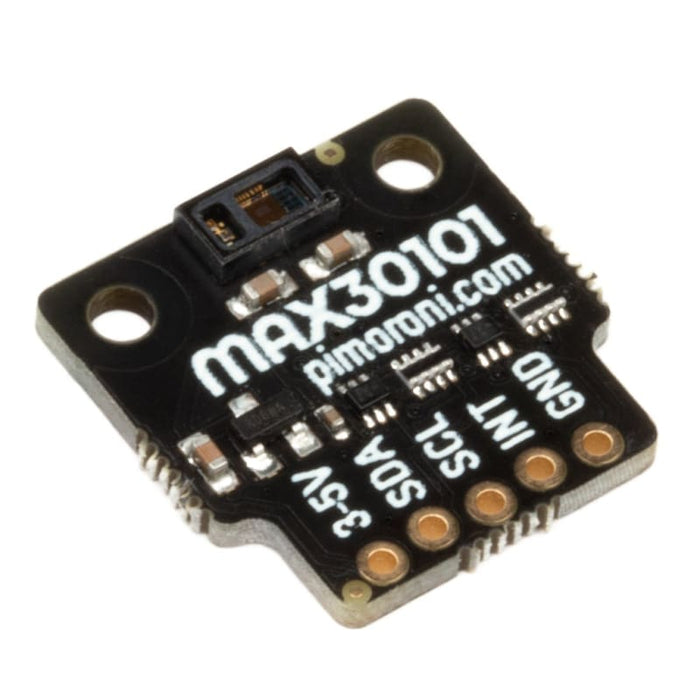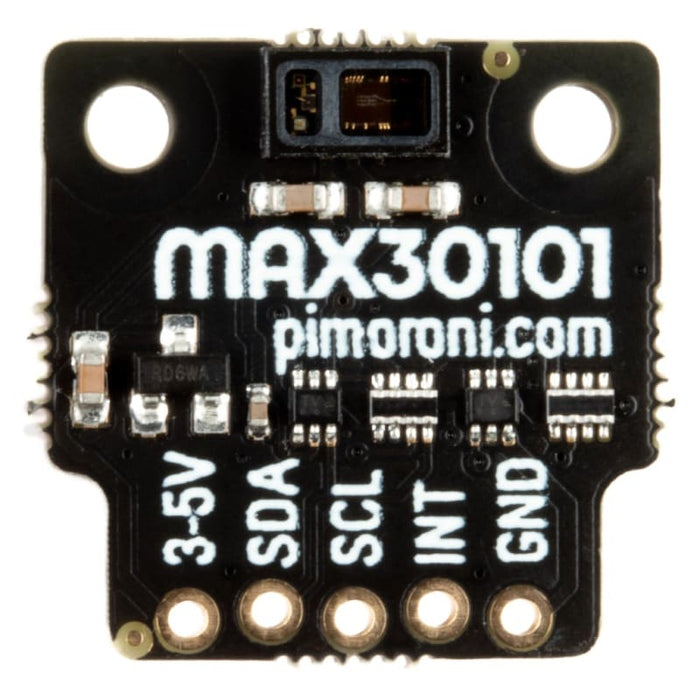MAX30101 Breakout - Heart Rate, Oximeter, Smoke Sensor
£13.74 ex VAT
The MAX30101 breakout is a sophisticated heart rate, oximeter, and smoke/particle sensor. Use it as a fun way to see your heartbeat, or to make LEDs or lights pulse in time with your heart. It's Raspberry Pi and Arduino compatible.
This sensor has three LEDs — green, red, and infrared and photodetectors that can be used together to detect the amount of light reflected back to the sensor. A technique called photoplethysmography (PPG) can be used to detect the change in colour of your skin with each beat of your heart when the sensor is pressed against your fingertip.
You can use the MAX30101 to detect particles in the air, like smoke, by measuring the amount of light bounced back to the sensor by the particles. They've got a rough example of how to do this in the Python library.
Please Note:
- The software does not support Raspbian Wheezy.
- This sensor (and the code in the Python library) should not be used for medical diagnosis, as the basis for a real smoke or fire detector, or in life-critical situations. It's for fun/novelty use only, so bear that in mind while using it.
- When measuring heart rate with the MAX30105 sensor, you'll get much more reliable readings if you attach the sensor to your fingertip (the fleshy side) with a piece of wire or rubber band looped through the mounting holes on the breakout
- Dimensions: 19x19x3.2mm (LxWxH)
- MAX30101 - Heart Rate, Oximeter, Smoke Sensor
- Green, Red, and Infrared LEDs
- Photodetectors
- Ambient Light Rejection
- Temperature Sensor
- I2C Interface (address 0x57)
- 3.3V or 5V Compatible
- Reverse Polarity Protection
- Compatible with all models of Raspberry Pi, and Arduino
- Python Library
- MAX30101 breakout
- 1x5 male header
- 1x5 female right-angle header
They've designed this breakout board so that you can solder on the piece of right-angle female header and pop it straight onto the bottom left 5 pins on your Raspberry Pi's GPIO header (pins 1, 3, 5, 7, 9).
The Python library makes it straightforward to use your MAX30101 sensor. We've included some examples of how to display and graph and display heart rate and a rough example of how to detect relative levels of particles like smoke.
SparkFun has put together a really comprehensive Arduino library for the MAX30101 sensor that also includes examples of how to measure blood oxygen saturation (SPO2), temperature, and presence detection.



